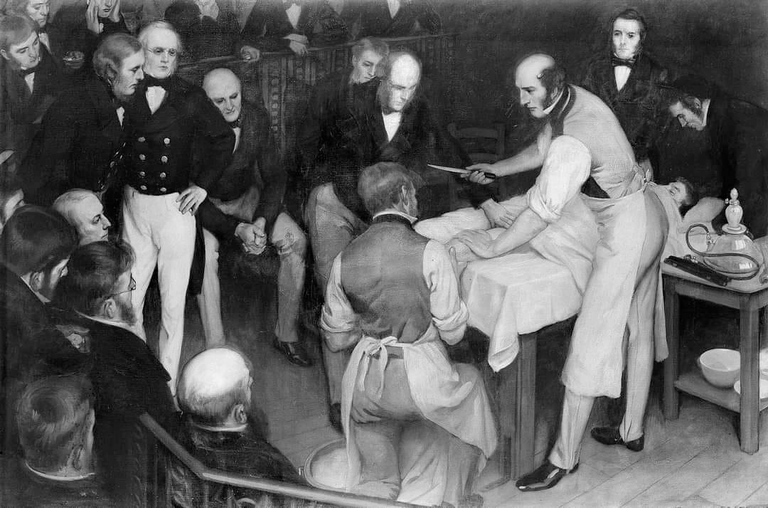Robert Liston, a pioneer of Western surgery, was known as a champion who could complete any surgery in the shortest possible time. Born in Scotland on October 28, 1794, he was named as the most outstanding anatomist that Northern England had produced when he left Edinburgh University after completing his basic medical education.
Later, he was appointed as a surgeon at the Royal Infirmary in Edinburgh, where he did a great service for western medicine as well as many pioneering works, and his later medical colleagues called him the 'fastest knife ever produced in the west'. His surgeries were so fast. Once he had removed a testicular tumor weighing 22 kg in less than 4 minutes.
At that time when anesthesia was not used for surgery, there was little knowledge about infertility or germ infection. Often the patient died immediately from heart failure during the acute pain during surgery or died a painful death after the surgical wound became infected. The best and only solution for both of these was to end the surgery as soon as possible and in such a background Robert Liston was regarded as a noble ideal.
6 feet and 2 inches tall, this burly man wearing a pair of green high boots, wearing a pair of green high boots, and coming to the bed of the operating room with his surgical tools in his hand, was like a portrait of a knight coming to a duel. Coming to the patient and getting ready to start the surgery, he turned to the medical students and said, "Okay, start watching the time now." Meanwhile, when the third type of knife was needed, he kept one blood-stained knife in his clenched mouth and worked with both hands without a second's hesitation. He was truly brilliant.
With his creative thinking, he created countless surgical instruments for the medical field. Also, some of the clinical procedures that he introduced are still used today and later on, he performed a pioneering mission to perform surgeries under anesthesia.
However, because of his tremendous speed, he left us the taste buds. I will note only three of them here. I urge you not to judge his abilities by any of them and compare them all to the time frame. Because this timeline is an era where anesthesia or sterility was unknown. Because it was an age when the surgeon's prowess was compared to the thickness of the coagulated blood on his blood-soaked apron.
- Once a little girl came to his clinic with a rather large pulsating lump on the neck and a small rash on the skin. "Pooh, are these nuts too?" Said Liston took his knife from his pocket and immediately cut out the tumor. Blood spewed from the cut and not only the walls, but even the ceiling was bathed in blood. When it was realized that the tumor was in the carotid artery, Koluwa's lifeless body fell to the ground and the carotid artery can still be seen today under specimen number 1256 in the Royal University Museum of Pathology.
- Once he amputated a leg which was rotting at record speed from the upper thigh and the patient was cured and lived perfectly healthy. But unfortunately, due to the high speed, the testicle was separated along with the leg.
- Once in 1847, Liston broke all his records and amputated a leg within 150 seconds where his assistant's arm was also severed and both the patient and the assistant died after inoculation and a bystander was shocked to witness the incident. He died instantly due to heart failure. This event entered the record books as the only surgery in the history of surgery with a mortality rate of 300%.
Robert Liston was a distinguished alumnus of the historic Edinburgh Medical School. Among the well-known names that are still frequently mentioned among doctors, Liston, who did great work for medicine, is considered an idealist who strictly followed 'medical ethical principles'. An example of this is the infamous 'Berg and Hare series of murders' and the immediate burial of Mary Peterson's body in a famous 'Robert Knox' whiskey barrel.

#blurt #blurtstory #geekpranee #invention #srilanka #rock #surgery #depended